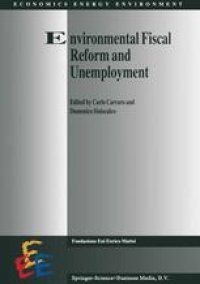
Ebook: Environmental Fiscal Reform and Unemployment
- Tags: Environmental Management, Environmental Economics, Labor Economics, Economic Policy
- Series: Fondazione Eni Enrico Mattei (FEEM) Series on Economics Energy and Environment 7
- Year: 1996
- Publisher: Springer Netherlands
- Edition: 1
- Language: English
- pdf
The European Union faces several interlinked challenges: how to protect the environment and favour sustainability; how to reduce unemployment and foster competitiveness in a context of growing globalization; how to reduce regional disparities among and within me mb er countries. The recent policy debate has clarified that the above objectives are not a trade off if jointly tackled. In particular, win-win policy options are available to the European Union by an appropriate integration of regulation, macro policy, social policy, fiscal policy and environmental policy. Evidence shows that optimising on each single policy will not meet the needs of the European Union. On the contrary, an integrated approach will make it possible to reach the various objectives, as stated in the Treaty on European Union, in the 5th Environmental Action Programme, in the White Paper on Growth, Competitiveness and Employment. This integrated approach would im plement a genuine sustainable development policy.
The European Union faces several interlinked challenges: how to protect the environment and enhance sustainability; how to reduce unemployment and enhance competitiveness in the context of growing globalization; how to reduce regional disparities among and within member countries.
The recent policy debate has revealed that such objectives are not a trade off, provided they are tackled in concert. In particular, win-win policy options are available to the EU, given an appropriate integration of regulation, macro-policy, social policy, fiscal policy and environmental policy. The evidence shows that an optimization of each single policy will not meet the needs of the EU. But an integrated approach would allow the implementation of a genuine sustainable development policy.
This book discusses the most recent results available on the green tax reform and the double dividend hypothesis. The first part is devoted to theoretical analysis, and the second provides empirical results.